NIL
What Gavin McKenna’s commitment means for the NCAA, CHL, Penn State, NIL and more
It has been eight months, almost to the day, since the NCAA voted to open up eligibility to Canadian Hockey League players. We’re now weeks away from the official Aug. 1, 2025 date set by the Division I Council. The flow of college hockey commitments from OHL, QMJHL and WHL players is now ramping up […]
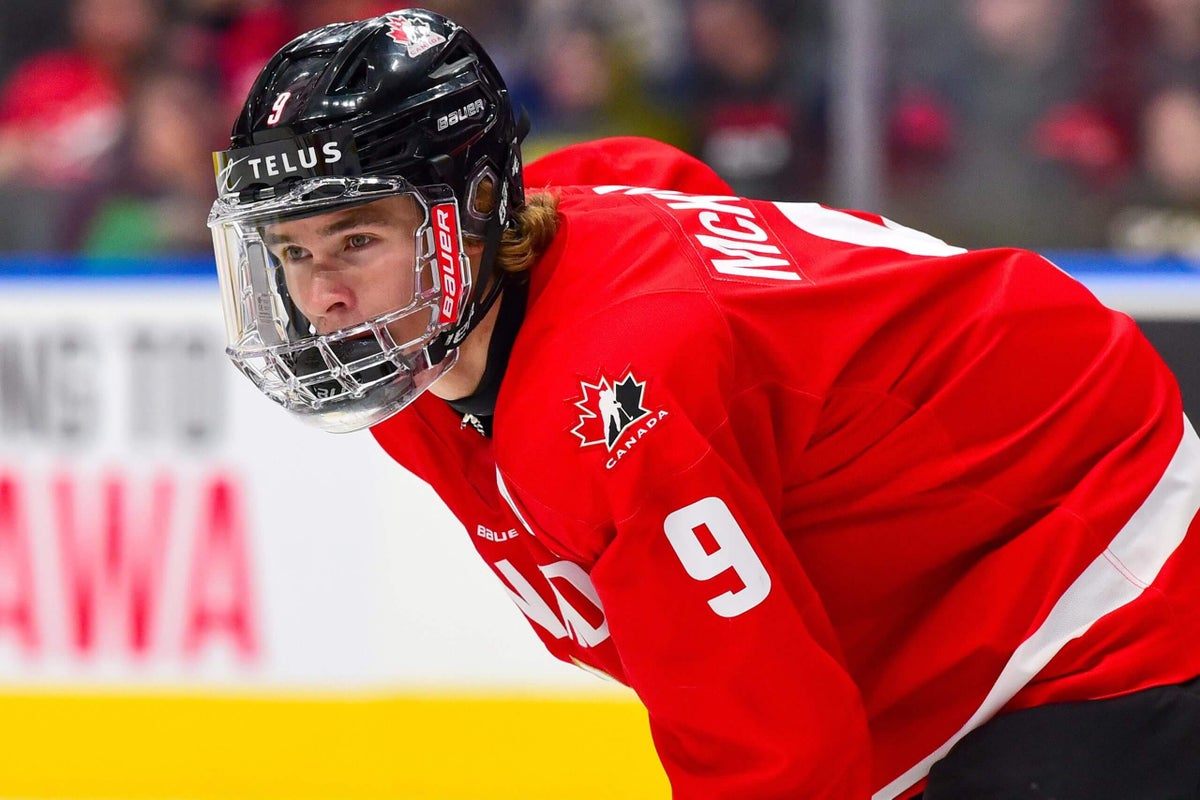
It has been eight months, almost to the day, since the NCAA voted to open up eligibility to Canadian Hockey League players. We’re now weeks away from the official Aug. 1, 2025 date set by the Division I Council.
The flow of college hockey commitments from OHL, QMJHL and WHL players is now ramping up as each school’s admittance deadline for the fall semester approaches — as are CHL clubs’ efforts to develop relationships with agencies and NCAA programs and recruit players across the border in the other direction from U.S. minor hockey, Canadian Jr. A and the USHL.
On Tuesday night, when the reigning CHL Player of the Year and No. 1 prospect in the 2026 NHL Draft class, Gavin McKenna, announced on ESPN’s SportsCenter his decision to commit to play his draft year at Penn State University, it marked the biggest decision since November’s rule change and arguably the biggest freshman recruitment in the history of college hockey.
Here’s where the landscape stands and what it means for the NCAA, CHL, Penn State and the rippling impact of NIL money in the sport.
Different approaches around the NCAA in new era
Penn State’s approach in this new era of recruiting has been pretty clear: The Nittany Lions have positioned themselves and their NIL pot as a major player financially and are looking to capitalize on the momentum of a Frozen Four appearance to sell their first-class facilities, coaching staff (led by head coach Guy Gadowsky) and Hockey Valley as a new top destination for players.
But more interesting than that to me over the last several months has been the different ways schools are going about their sales pitch. Michigan State has really sold its coaching staff under Adam Nightingale and the renewed history and facilities at Munn Ice Arena to successfully recruit top classes and transfers. I heard a lot about Boston College, Boston University and Maine spending time in QMJHL rinks this year, and Maine has had some positive early successes tapping into Quebec and eastern Canada for players. Colorado College under Kris Mayotte has smartly recruited mid-round picks who were top players for their CHL teams, but are maybe not marquee names. Nebraska-Omaha is trying to carve out a reputation as a U Sports recruiter and has successfully recruited a class of former top CHLers who didn’t get pro deals and were stars at Canadian universities last year. North Dakota is using geography, history and a new staff structure to go after the top players in western Canada and has already landed two big ones in top 2026 prospect Keaton Verhoeff and 2025 first-rounder Cole Reschny. And there are other programs, like the University of Minnesota which has so heavily focused on players from within the state for so long, that haven’t yet made the same kind of inroads.
Who has success doing what is going to be one of the fascinating stories of the next few years in college hockey.
The CHL will still be the CHL
I think there’s been a bit of hyperbole and conjecture in all of this about the ultimate fate of the CHL.
There have been a little over 150 commitments made by CHL players to the NCAA. Of those, roughly 85 percent are graduating or 19-year-old players, meaning only a little over 20 players aged 17-18 have so far made the move for next year. In the last couple of weeks, several first-rounders who had interest from top NCAA programs, including Jake O’Brien, Benjamin Kindel and Lynden Lakovic, have decided to return to the CHL and sign entry-level contracts with their NHL clubs. (Look out for a few more in the next couple of weeks.)
It’s still a sensitive topic and time for the leagues, their teams and owners and fans in 61 hockey markets.
The counterflow back the other way and into the CHL has been real as well, though. More than 25 USHL players made the move to the CHL this season, and others, like Sharks second-rounder Haoxi Wang, made the move out of Canadian Jr. A and into the league. In the fall, college-bound USHL players like Blake Montgomery and Lev Katzin made quick decisions to come north. Other top young Canadian players like Adam Valentini and Caleb Malhotra, who didn’t previously have the CHL as an option after they made NCAA commitments, are now choosing it as their preferred path into college. A record number of American players were taken in the 2025 OHL Priority Selection. Some of the bigger programs think they can challenge the U.S. NTDP for top American talent now. The Quebec Remparts were aggressive in the QMJHL draft, targeting prospects in the U.S. The Saint John Sea Dogs have a history of pulling American players from the northeast of the U.S. that they can now lean on. The Penticton Vees, the CHL’s newest franchise, have a similar history out west and established relationships with NCAA programs. I’ve heard that franchises like Portland, Moncton and Kitchener have also worked hard to establish lines of communication with agencies and schools.
“There’s this big thing that we hate them and they hate us, but we’ve all got buddies who coach in the NCAA,” one OHL general manager told The Athletic.
“In my eyes, build a good program, have good coaching, development, communication, then why would they leave? It’s the best development league in the world,” said another OHL general manager.
Just last week, the Brantford Bulldogs secured USHL and Czech national team star Adam Benák, a Wild prospect, in the CHL Import Draft. The Regina Pats drafted USHL goalie and Red Wings prospect Michal Pradel. The Sea Dogs drafted Olivers Murnieks, a potential top-two-rounds pick in 2026, who played last season in the USHL. On Monday, I got a text about Nikita Klepov, another potential top-two-rounds pick in 2026 who played in the USHL last season and may end up in Saginaw next year. The list goes on.
“Once everything kind of settles, is it a bad thing? I don’t know if it’s a bad thing,” said a QMJHL head coach.
The $ — and NIL — of it all
Money talks.
It has always talked loudly in hockey, an expensive sport made up predominantly of well-to-do people.
But it’s talking louder than ever in the sport right now, and McKenna’s package from Penn State has set a new bar. Not that long ago, top NHL prospects were telling me they were getting branded sweaters and free meals at local restaurants as their NIL packages. McKenna’s package, all in all, is rumored to be upwards of $700,000 USD — or in and around a million CAD. (I haven’t been able to verify that number with people connected to McKenna, but it’s the biggest package ever given to a college hockey player.)
The CHL’s three leagues remain in good positions to hold their standings as the NHL’s top leagues for developing players. Several markets, including Brantford and Ottawa, have new arenas in the works. On Tuesday morning, at the height of McKenna Watch, the Drummondville Voltigeurs announced a complete overhaul of their Centre Marcel Dionne. There is big money behind organizations like Moncton and Saint John. In May, players’ area upgrades were announced for The Aud, Kitchener’s legendary arena. Other teams have reached out to their municipalities for the first time in decades in an effort to take this moment to improve their facilities and offerings.
“It puts a little bit of the onus on the owners of upscaling what they have to offer for facilities,” one OHL coach told The Athletic.
However, many CHL clubs can’t compete with the money and facilities offered at the big American schools. I’ve been to dozens of the CHL’s rinks and virtually all of the NCAA’s big schools. I’ve been behind the scenes at Wisconsin’s Kohl Center and Labahn Arena, and Michigan State’s newly upgraded and iconic Munn Ice Arena. I know what they’re up against. But where the money goes, the players will benefit. That’s true in both the NCAA and CHL, where the developments of the last year are only positive for what they mean for the pockets of the players and the amenities and paths they’ll have available to them on either side of the border.
There’s fear within the CHL and the NCAA that the rich will get richer and smaller markets and schools will have an even tougher time competing with the likes of London in the CHL and the powerhouses in the Big Ten or Hockey East than they already do, but smart hockey and business minds will find niches and avenues forward.
A program-shaping time for Penn State
The Nittany Lions didn’t become a Division I hockey program until 2011. When they did, they brought in Guy Gadowsky, previously of Princeton and Alaska-Fairbanks. In their second season as a Division I program, they played as a conference-less independent school. They’ve yet to produce an NHL player of note. But after a stunning run to the Frozen Four following a difficult, testy start to last season, they’ve now suddenly emerged, with their big-money backing (and their Pegula Ice Arena — with all of its bells and whistles — named after it), as a front-runner in the recruiting race for top talent. Last year’s team helped turn Nashville Predators prospect Aiden Fink into one of the country’s top scorers and overager Charlie Cerrato into a second-round pick, but they’ve never had a best-in-class freshman class, or even a freshman class of any notoriety. Now, after landing big transfer portal gets like Mac Gadowsky, Guy’s son, and goaltender Kevin Reider, they’ve also lured freshmen like Blue Jackets first-rounder Jackson Smith, Flames prospect Luke Misa and now McKenna.
And it cannot be overstated what McKenna does for the Nittany Lions. Not only is it a transformational time for the program and its boosters, it could create another potential giant in a Big Ten conference that had already had quite the glow-up over the last several years thanks to the re-emergence of Michigan State and the continued relevance of Michigan, Minnesota and Wisconsin (albeit with mixed on-ice results for the latter).
A player like McKenna in Hockey Valley was unthinkable a short time ago. Part of the impetus of his decision was to put his mark on the program he chose. In choosing Penn State, he changes everything for them.
(Photo: Leila Devlin / Getty Images)
NIL
Women’s Soccer Welcomes 11 Newcomers for 2025 Season
FAIRFAX, Va. – Head women’s soccer coach Aaron Brunner has announced the addition of 11 newcomers to the George Mason women’s soccer program ahead of the 2025 season. The incoming class features a mix of freshmen, transfers, and graduate students who bring collegiate experience, international training, and decorated youth careers to Fairfax. The new additions […]

FAIRFAX, Va. – Head women’s soccer coach Aaron Brunner has announced the addition of 11 newcomers to the George Mason women’s soccer program ahead of the 2025 season. The incoming class features a mix of freshmen, transfers, and graduate students who bring collegiate experience, international training, and decorated youth careers to Fairfax.
The new additions are:
#00 Kylie Brookfield | Freshman | 5’5″ | Goalkeeper | Highlands Ranch, Colo. | Mountain Vista
- Played club for Real Colorado Soccer Club
- Four-time Academic All-State First Team selection
#0 Libby Davy | Junior | 5’11” | Goalkeeper | Adelaide, Australia | Woodcroft College
- Transferring from University of the Pacific after playing two season
- Invited to Junior Matildas training camp in 2022
- Trained with A-League Women’s team Adelaide United
#2 Julia Buono | Freshman | 5’6″ | Midfielder | Oradell, N.J. | Northern Highlands Regional
- Played club for Match Fit Academy ECNL (4x Champions League qualifier)
- Led high school to #6 national ranking and back-to-back state sectional championships
#3 Mia Arevalo-Delcid | Redshirt Sophomore | 5’5″ | Midfielder/Forward | Manassas, Va. | Charles J. Colgan Sr.
- Transfer from James Madison
- Two-time All-District First Team selection
- All-Region Second Team (Sophomore), First Team (Junior)
#7 Vanessa Sarf | Redshirt Freshman | 5’7″ | Forward | Manalapan, N.J. | Manalapan
- Transfer from Elon
- Three-time All-County and All-Conference honoree
- Two-time NJ High School Top Forward and Player of the Year candidate
- Played club for PDA Blue ECNL
#8 Aaliyah Schinaman | Graduate Student | 5’6″ | Forward | San Mateo, Calif. | Hillsdale
- Transfer from UC Berkeley
- Played two seasons and redshirted two at Cal
- Played club for MVLA Barca ECNL
- Five-time U.S. Soccer National Training Center invitee (2016–2021)
#17 Adriana Bonanno | Freshman | 5’4″ | Midfielder | Holly Springs, N.C. | Holly Springs
- Played club for North Carolina Courage
- Named All-Conference and All-Region as a senior
#19 Kasey Maida | Freshman | 5’5″ | Midfielder | Burke, Va. | Robinson Secondary
- Played club for Virginia Development Academy (Top-8 national finish)
- First-Team All-State, All-Region, and All-District selection in high school
#21 Jordan Felton | Graduate Student | 5’6″ | Midfielder | Waldorf, Md. | North Point
- Transfer from University of Miami
- Played club for McLean ECNL
- United Soccer Coaches Youth Girls All-East Region Team (2019)
#22 Ariana Reyes | Graduate Student | 5’4″ | Midfielder/Forward | Washington, D.C. | Columbia Heights EC
- Transferred from James Madison
- Played for McLean ECNL
- DCSAA Player of the Year (2020)
#30 Gianna Chrapek | Sophomore | 5’7″ | Defender/Midfielder | Richmond, Va. | Deep Run
- Transferred from Dayton
- Four-time All-Region selection
- Region Player of the Year, Metro Player of the Year, and First Team All-State honoree
The Patriots kick off their 2025 campaign on Saturday, August 9 at 6 p.m., with an exhibition vs. Howard, followed by their regular season home opener on Thursday, August 21 at 5 p.m.
NIL
Trump Order Targets NIL and Protects College Sports
On July 24, 2025, President Trump issued an executive order relating to college athletics and name, image, and likeness (NIL) payments. This order seeks to limit third-party NIL payments and require universities to preserve Olympic sports programs as they work to implement the House settlement, which permits universities to engage in direct revenue sharing contracts with their athletes. […]

On July 24, 2025, President Trump issued an executive order relating to college athletics and name, image, and likeness (NIL) payments. This order seeks to limit third-party NIL payments and require universities to preserve Olympic sports programs as they work to implement the House settlement, which permits universities to engage in direct revenue sharing contracts with their athletes. This order also aims to prevent, as stated in a published fact sheet, “endless litigation seeking to eliminate the basic rules of college sports.” The legal significance and correctness of this order, which implicates student athletes” right to contract, the anti-commandeering principle of the United States Constitution as applied to state universities, and other significant legal matters, will be hotly debated.
Regardless of this executive order’s direct legal impact, however, it displays the competing policy positions and concerns at play in this area. As has been widely reported, many universities in the so-called “Power Four” conferences intend to provide a significant majority of revenue sharing funds to their football and/or men’s basketball teams. These sports are the revenue drivers for most institutions and financially subsidize other programs. To defray the cost of revenue sharing, some universities have implemented or considered cuts to non-revenue-generating sports and/or various roster limits. This executive order, however, states plainly the President’s intent to ensure that such Olympic sports are preserved at the collegiate level. This creates uncertainty as to how and whether universities can focus their funds on football and men’s basketball, as many intend.
Perhaps most significantly for universities, this order requires that “any revenue-sharing permitted between universities and collegiate athletes should be implemented in a manner that protects women’s and non-revenue sports.” Providing a majority of revenue sharing payments to football and men’s basketball players would not appear to comply with this intent. Although stated in the executive order as more of a policy goal, the major question it begs is whether the Executive Branch interprets Title IX as requiring such balanced implementation of revenue sharing payments. If so, this would absolutely prohibit any football and men’s basketball-focused model and force many universities back to the revenue-sharing drawing board.
The competing policy considerations and legal issues reflected in this executive order only make the need for federal legislation in this area even more apparent. Currently, federal courts are considering issues such as college athlete employment, as well as the legality of the House settlement itself. Legal disputes relating to whether and which third-party NIL payments will be permitted and whether Title IX applies to such payments will come in the near future. This executive order attempts to resolve these issues with a priority on protecting women’s and Olympic college sports programs. However, aside from additional litigation this order might invite, doing so could threaten the projected financial model for college football and men’s basketball. The only manner to definitively establish law and policy around these questions is through federal law.
In these uncertain times, universities require partners who can assist them with not only fighting and interpreting legal matters, but also with shaping the legal landscape itself. To the extent universities wish to advocate for a future in which they can financially prioritize certain sports or avoid apparent legal problems, they must be prepared to actively engage in the federal legislative process to make their interests known. Otherwise, as discussed in the executive order, “the basic rules of college sports” will be decided around them.
SAVING COLLEGE SPORTS: Today, President Donald J. Trump signed an Executive Order to protect student-athletes and collegiate athletic scholarships and opportunities, including in Olympic and non-revenue programs, and the unique American institution of college sports.
NIL
All
Women’s college volleyball has exploded over the past few seasons, garnering record attendance and viewership numbers in the process. During the NIL era especially, volleyball student-athletes have become some of the most prolific brand ambassadors and content creators. Now, two of the nation’s best have landed sneaker deals with a disruptor brand in the space. […]
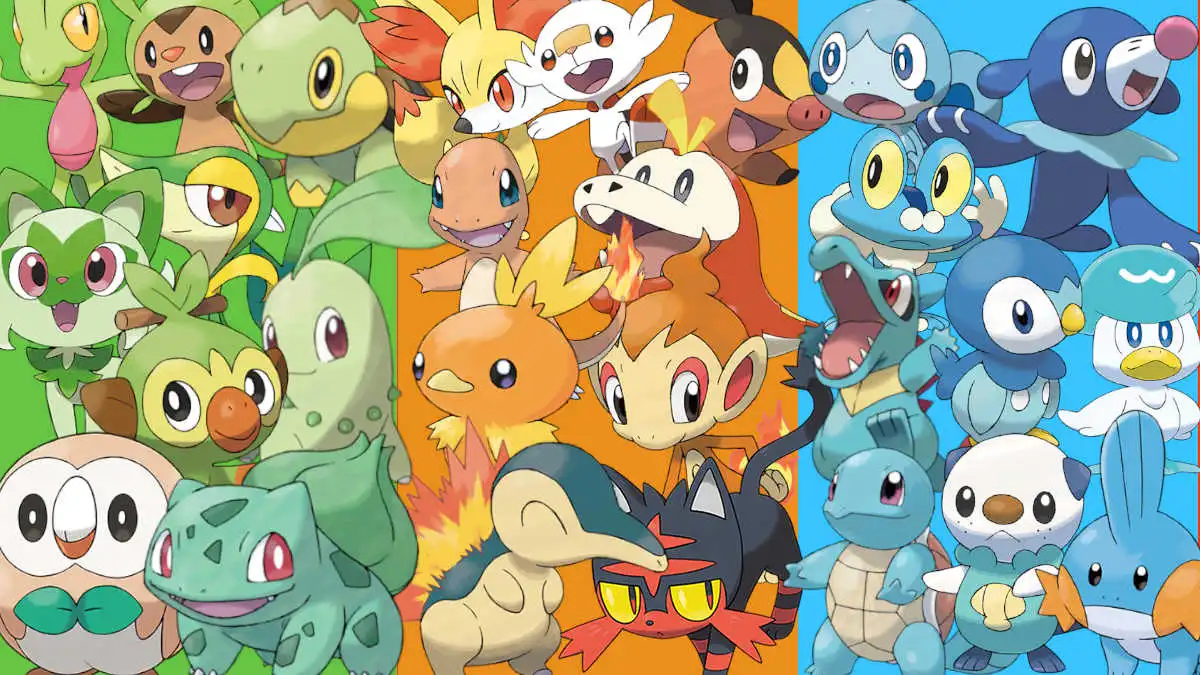

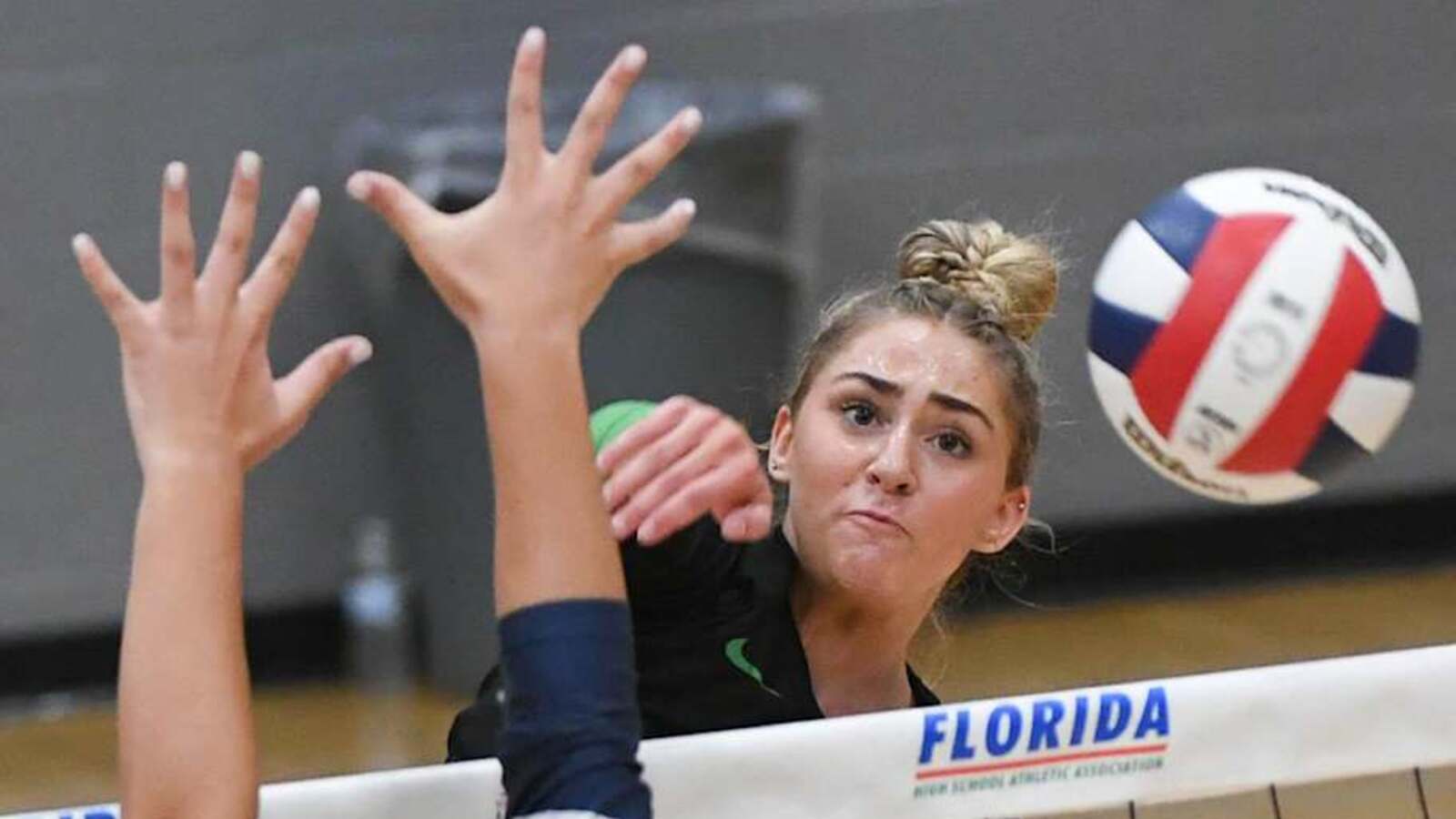
Women’s college volleyball has exploded over the past few seasons, garnering record attendance and viewership numbers in the process. During the NIL era especially, volleyball student-athletes have become some of the most prolific brand ambassadors and content creators. Now, two of the nation’s best have landed sneaker deals with a disruptor brand in the space.
Avoli – the only athletic brand dedicated exclusively to women and girl volleyball players – has signed All-American duo Andi Jackson of Nebraska and Izzy Starck of Penn State, adding two stars to their growing NIL roster. A season ago, the Portland-based brand celebrated its first birthday with a $2.1 million funding round, a new exclusive retail partner in SCHEELS and seven college athletes joining the brand.
Jackson and Starck are the highest-profile signings to date and mark a significant moment for Avoli.
“I chose to partner with Avoli because of how they talked about women sports and how they are giving girls shoes just for them,” shared the defending Freshman of the Year and National Champion, Starck. “I love how there is a shoe company that is meant just for volleyball.”
NIL
Is Texas the most valuable football team in the U.S.?
AUSTIN, Texas — For many Texas Longhorns fans, you can’t put a price on their favorite team. But what if it’s a multi-billion dollar valuation? What You Need To Know The Athletic, which is owned by the New York Times, posted its rankings of every Power 4 team by how much they would sell for Texas came […]
AUSTIN, Texas — For many Texas Longhorns fans, you can’t put a price on their favorite team. But what if it’s a multi-billion dollar valuation?
The Athletic, which is owned by the New York Times, posted its rankings of every Power 4 team by how much they would sell for. The outlet used each team’s revenue over the past three years and data from professional transactions, with the SEC and Big Ten being guided by NFL and NBA sales and the ACC and Big 12 being guided by MLB and NHL sales.
“For each school in a Power 4 conference (plus Notre Dame), we factored in everything from prestige and championships to facility renovations, population trends and realignment scenarios,” the article said. “That means treating Notre Dame more like the Los Angeles Lakers and Boston College more like the Kansas City Royals.”
With all that being considered, Texas came out on top with a projected price of $2.38 billion.
The Athletic said no one comes close to the Longhorns’ revenue, with the team being the only one to top $200 million in the most recent financial reports. The next closest program had $25 million less revenue.
The article said that a sale of the Longhorns, if that were allowed, would be comparable to the sale of the Carolina Panthers in 2018.
The next team in the Lone Star State on the list was Texas A&M at No. 15. The Aggies were valued at just under $1 billion, at $973 million, and ranked ninth in the SEC.
“The Aggies have the rabid fan base and demographic upside to be higher. Money has also never been an issue at a program that paid Jimbo Fisher the biggest buyout in college football history (about $77 million),” the article said. “But we’re also considering wins and losses because of the money victories bring.”
The Athletic called Texas A&M the “nation’s biggest underachiever.”
Rounding out the top of the list was TCU at No. 30 with a $523 million valuation.
NIL
Tech’s transfer class ranked No. 1
LUBBOCK, Texas – Softball America released its rankings of the top transfer portal classes in the country on Monday which featured the Red Raiders at No. 1 for the second consecutive season. Texas Tech finished its historic 2025 season as the National Runners-Up after advancing to its first ever Women’s College World Series. Gerry Glasco and […]

Gerry Glasco and company added All-Americans Mia Williams, Taylor Pannell and Jasmyn Burns as well as Kaitlyn Terry, Jackie Lis, Desirae Spearman and Lagi Quiroga.
“We wanted to add depth and experience in as many places as possible as we try to win the National Championship this coming season,” said Glasco. “Obviously it will be very difficult to improve upon our 2025 season, but as a staff we feel like we have made tremendous improvements as we enter our second season at Texas Tech.”
The Red Raiders lost two key seniors in Demi Elder and Alexa Langeliers and had a focus on replacing their production as well as adding more depth in the circle and behind the plate.
“Pitching, catching and infield were our priorities as far as depth and experience,” Glasco said. “We feel like we have added tremendous talents to our roster and gained more postseason experience through the new additions coming in.”
Williams, Pannell and Terry all played in the WCWS last season while Burns and Quiroga played in the NCAA Regionals. Along with postseason experience, the newcomers add a lot of power to Glasco’s lineup as the seven athletes combined to hit 105 home runs last season. The Red Raiders finished with 60 long balls last season and had only one player finish with double digits in that category.
“The other critical point of emphasis was power on the offensive side,” Glasco said. “We have added seven athletes that hit 105 home runs in 2025 to our roster, a roster that returns just 45 home runs from last season. We felt that adding extra base hits, both doubles and home runs, was the most important aspect of our offense heading into next season.”
Expectations for the Red Raiders were high going into last season, and they might just be even higher heading into the 2026 season.
The Newcomers:
Mia Williams finished the 2025 season with 19 home runs and was a 2025 NFCA Second Team All-American as well as All-SEC Second Team and NFCA All-Gulf Region First Team honoree. She hit .335 with 44 RBI, recording 18 multi-hit games and was in on 18 double plays from the second base position.
Taylor Pannell spent time at third base and outfield while in Knoxville, slashing .351/.632/.425 over 124 games. Her power took a big leap this past season, hitting 13 doubles and 16 home runs which doubled her total from her freshman campaign. She was also named to the NFCA All-Mid-Atlantic Region First Team and a 2025 CSC Academic All-American, NFCA Second Team All-American and All-SEC First Team honoree.
Jasmyn Burns slashed .455/1.006/.540 this past season with 25 home runs and 72 RBI on her way to being named an NFCA First Team All-American, NFCA All-Great Lakes Region First Team member and All-Big Ten First Team member. Burns was also named to the Big Ten All-Freshmen Team and the NFCA All-Midwest Region Third Team in her freshman year.
Kaitlyn Terry recorded her second straight 20-win season with the Bruins, going 20-5 with a 2.64 ERA and striking out 172 batters while walking just 34. The lefty helped UCLA to a 2025 WCWS appearance as she was named to the NFCA All-West Region Third Team. Her freshman season, Terry was named the Pac-12 Freshman of the Year as she posted a 21-3 record with a 2.38 ERA and 161 strikeouts.
Jackie Lis was a three-time All-MVC First Team selection and was named the MVC Player of the Year in 2024. The rising senior has played and started in 164 games and has hit .340 or better in all three seasons and post double-digit home runs in those years. For her career she is slashing an impressive .353/.690/.457 with 141 RBI and 95 walks to go along with her home run numbers. Lis was also a two-time NFCA All-Region selection and a two-time MVC Scholar-Athlete.
Desirae Spearman was named the 2024 CUSA Freshman and Player of the Year and is a two-time All-CUSA First Teamer and holds a 3.38 career ERA with 193 strikeouts while also slashing .398/.921/.540 with 38 home runs and 90 RBI for her career. Her .430 batting average this past season set a program record and her .606 on-base percentage and .977 slugging percentage were both ranked fifth in the country.
Lagi Quiroga slashed .346/.631/.443 with 12 home runs, 13 doubles and 44 RBI. She started all 58 games for the Golden Bears and collected 62 hits. Although she played catcher, Quiroga is a versatile defender able to play in several positions over the course of the season. She has amassed 109 hits, 20 doubles, 28 home runs and 75 RBI over her two-year career. Her freshman season she was named to the All-PAC 12 Freshmen Team, NFCA All-Pacific Region First Team and the Softball America Freshmen All-American team.
NIL
A Surprising Message from Kentucky Football Ahead of the 2025 Season
Finding the right message to inspire the masses is difficult following a disappointing season. That was the task for Mark Stoops and the Kentucky football program at SEC Media Days. More than a week later, I’m still perplexed by what transpired in Atlanta. Ahead of their stop in Atlanta, we expected culture to be a […]
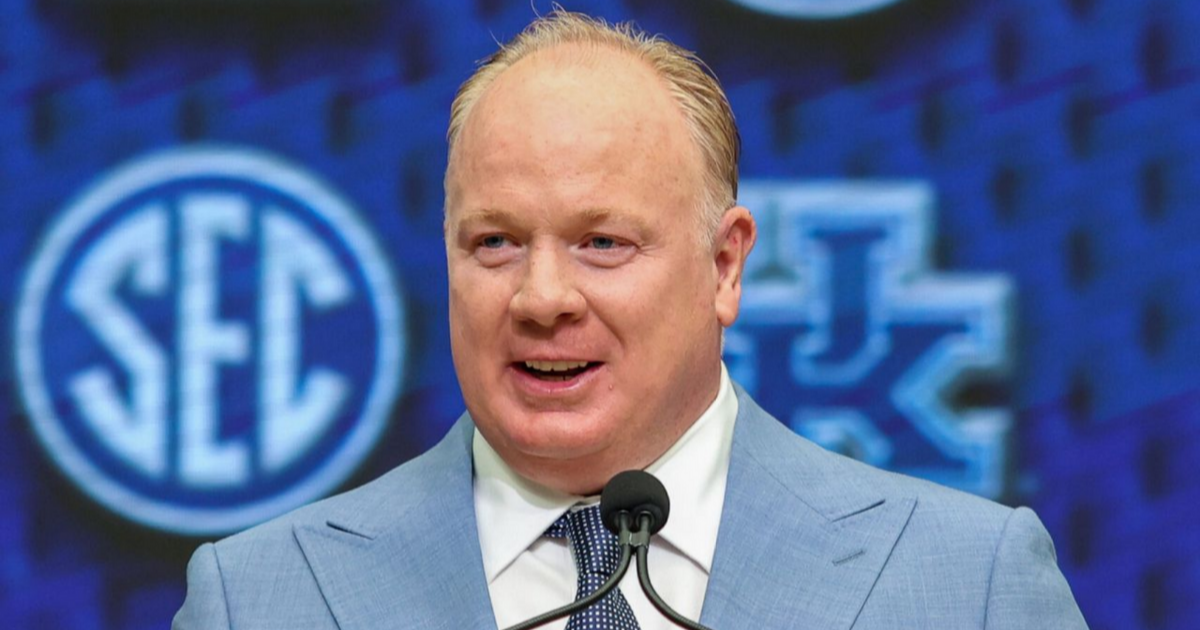
Finding the right message to inspire the masses is difficult following a disappointing season. That was the task for Mark Stoops and the Kentucky football program at SEC Media Days. More than a week later, I’m still perplexed by what transpired in Atlanta.
Ahead of their stop in Atlanta, we expected culture to be a primary talking point. Kentucky let go of the rope in the second half of the season. Instilling tenacity and resolve into the program felt like low-hanging fruit to lean into ahead of the 2025 campaign. Jordan Lovett was first up to the mic and spoke candidly about culture changes within the program.
“We are trying to change the culture, especially with a whole bunch of new guys coming in. So far we’ve bonded great together,” he said. “Every Wednesday, we do this thing called 4 for 40. A guest speaker comes in and talks about life outside of football, and on the field, just how we can be better people, like in life. So I feel like that’s been going pretty good.”
Okay, that sounds good. Next up, Alex Afari shared a similar sentiment.
“I feel like everybody’s buying in,” said Alex Afari. “You can feel it in the whole facility. Everybody’s bought into our culture, because last year was not standard at all.”
That’s what you need to hear from a football program that is bringing in 50 new players. Much of the focus this offseason has centered around team-building, yet according to others, it isn’t entirely about changing the culture.
Josh Kattus was the final player to speak with the media. Instead of sharing a similar, albeit more polished message, his response went in the complete opposite direction.
“I don’t think anything changed. We still have the same four core values,” said the Kentucky tight end. “I think there’s maybe a shift in urgency after last season, but same culture, same mindset, we just got to make sure that we’re more intentional about it this season.”
So, nothing changed? It’s not entirely nothing.
As Mark Stoops noted for the umpteenth time, the coaching staff broke down everything that went wrong and created a plan of action to solve those problems. But in the Kentucky head coach’s eyes, that’s also the case after good seasons.
“I think it’s fair for me to address last year, but not dwell on it. Anytime you have a season like that, you better take a good look at yourself. Certainly, we evaluated everything within the program, as we always do, because if you’re coming off a really good season, you have to make sure you’re capitalizing on the things you’re doing well, and maybe continue to exploit those things and get better in areas where you fall short, try to get better,” he said.
“So it’s really no different. I’m okay talking about it, but I don’t want to dwell on it, because again, I’ve stood here before two times after 10-win seasons, which didn’t happen a lot around here, and all I was worried about was the next season.”
Mark Stoops reiterated those four core values in the Main Room — attitude, toughness, discipline and
pride — as something Kentucky needs to “lean back into” to be successful.
Allow me to reiterate that messaging is hard after a 4-8 campaign. However, “nothing has changed” is a surprising message to deliver to Big Blue Nation. If you put the pieces together, what they’re essentially spelling out is that players were the problem. Adding 50 new players is the big change that will fix this program.
Mark Stoops wants the Kentucky football program to return to its hard-nosed identity, one that it got away from in the NIL era when the Wildcats got a poor rate of return from their star players. For this to work, the new guys must buy into those four core values and consistently deliver results on Saturdays. Allow me to borrow another commonly used line from Mark Stoops: “We’ll see.”
-

 College Sports3 weeks ago
College Sports3 weeks agoWhy a rising mid-major power with an NCAA Tournament team opted out of revenue-sharing — and advertised it
-

 Sports3 weeks ago
Sports3 weeks agoNew 'Bosch' spin
-

 Fashion2 weeks ago
Fashion2 weeks agoEA Sports College Football 26 review – They got us in the first half, not gonna lie
-

 Health2 weeks ago
Health2 weeks agoCAREGD Trademark Hits the Streets for Mental Health Month
-

 Sports2 weeks ago
Sports2 weeks agoVolleyball Releases 2025 Schedule – Niagara University Athletics
-
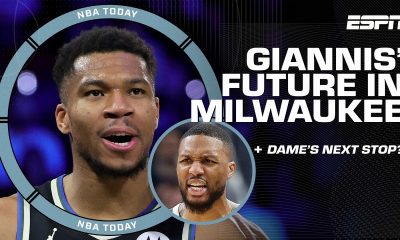
 Youtube3 weeks ago
Youtube3 weeks agoWill Giannis DEPART Milwaukee⁉️ + How signing Turner & waiving Dame impacts the Bucks | NBA Today
-
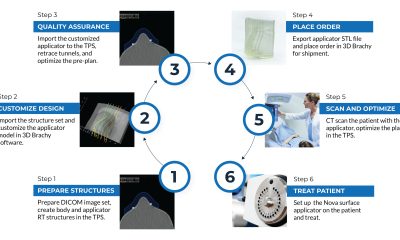
 Sports2 weeks ago
Sports2 weeks agoAdapti, Inc. (OTC
-
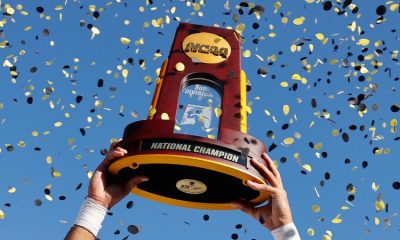
 Sports2 weeks ago
Sports2 weeks agoNew NCAA historical database provides wealth of information on championships
-

 College Sports2 weeks ago
College Sports2 weeks agoBuford DB Tyriq Green Commits to Georgia
-
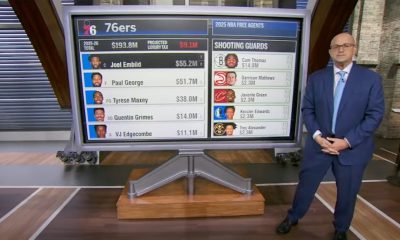
 Youtube3 weeks ago
Youtube3 weeks agoFREE AGENCY BREAKDOWN 🚨 What moves can the 76ers make? 🤔 | NBA Today



























